Screen International’s picks of the hot films at the 2015 Sundance Film Festival (Jan 22-Feb 1).
John Crowley, Brooklyn

Colm Toibin’s coming-of-age novel Brooklyn about a young woman who travels from her home in Ireland to Brooklyn in the early 1950s, won the UK and Ireland’s prestigious Costa Book Award 2009 and was longlisted for the Man Booker prize in the same year. Irish director John Crowley took on the challenge of directing Nick Hornby’s adapted screenplay of the beloved book, and is rewarded with a world premiere in Sundance this month.
“It feels like a really important story to have told, and before anyone judges it, this is absolutely the film I set out to make,” he says.
“All my luck came at once when I received the phone call from Wildgaze Films asking me if I wanted to direct this,” continues Crowley. “I first read Colm’s book several years ago, and just loved it. Then getting to read Nick Hornby’s script — it was truly a beautiful adaptation, making it easy to envision how it could be brought to life.”
Curtain call
Crowley is well known in the theatre world — in particular his acclaimed version of Martin McDonagh’s The Pillowman that played in London and New York. To cinephiles, he is known for his earlier films including black-comedy crime caper Intermission and Bafta-winning drama Boy A, starring a then-unknown Andrew Garfield.
Though prolific, as his résumé suggests, Crowley admits putting Brooklyn on screen was no small feat. “I felt the pressure. It’s just one of those things when you take on a well-known literary piece of work,” he says. “I had never worked on an adaptation like this before, and I wanted to make sure the novel wasn’t lost on the big screen.”
The Ireland-UK-Canada co-production warranted a complicated shooting schedule that saw three weeks in Ireland, four weeks in Montreal (doubling as Brooklyn) and two days in New York.
While Crowley had worked on bigger budgets, such as terrorist thriller Closed Circuit, he reveals the sheer scale and ambition of what he and the production team were trying to achieve on Brooklyn was challenging and exciting.
Rather than emulating an old-fashioned 1950s period film, Crowley brought on board cinematographer Yves Bélanger, who shot Dallas Buyers Club, to help create a visual style that was contemporary and immediate. A broad colour palette helped to depict the different locations, while tight framing was used to show shifting perspectives.
Ellis Lacey — the woman who is pushed into leaving her small-town roots in Ireland for Brooklyn — was initially to be played by Rooney Mara, but scheduling conflicts opened the door to Saoirse Ronan, whose lead performance is described by Crowley as “one of the most defining performances of her career”.
The director likens working with the cast — which includes Domhnall Gleeson Emory Cohen, Jim Broadbent and Julie Walters — to an archaeologist chipping away to find something special, something he claims was much easier because of the material’s emotional density.
“We all can relate to that feeling of moving to a place that feels unfamiliar, but when you return home, you look different and they look different,” says Crowley. “This to me is what makes the story so universal — everyone at some point has been in a state of exile.”
Tiffany Pritchard
Francois Delisle, Chorus

“I think living means coming to grips with loss, with mourning loved ones as well as ideas,” says Francois Delisle. “Whether we like it or not, life and death are connected in our very being.”
The connection is palpable in Chorus, the Montreal director’s World Cinema Dramatic Competition entry that sees him return to Sundance after The Meteor premiered at the festival in 2013.
In Chorus, Fanny Mallette and Sébastien Ricard play estranged parents who reunite in Montreal after the body of their son surfaces 10 years after his kidnap by a paedophile.
Neither parent is particularly likeable in the film and Delisle’s fierce artistic integrity manifests itself in a robust defence of his approach to telling the story. “I don’t really care if they’re likeable or not,” he says. “What interests me is the human experience that a work of art can bring to people who are exposed to it. I put all my energy, from the scriptwriting to the final edit, into making sure the film has that effect.
“It’s about being straightforward with myself and with others. From that point on, everything that makes up the film — characters, dialogue, images, etc — falls into place, I wouldn’t say easily, but pretty organically.”
In a similar vein Delisle rejects the notion an empathetic depiction of the paedophile character is in any way brave.
“He’s a human being, like you or me. There’s nothing brave about approaching him without judgment and going beyond cliché.
“We’re bombarded with sexual, racial and ideological stereotypes that condition our way of seeing life and other humans. It keeps us confined to our niches where the last thing we want is to be confronted.”
Delisle says the killer embodies the dark place “we all have inside us”, and says it is his job to show this.
The $1.7m Chorus shot in Montreal in February 2013 and derives much of its haunting, almost dreamlike tone from the black-and-white imagery.
“I saw monochromatic images when I started writing,” Delisle says. “But it only came together once I’d finished the writing process. A collection of photos by Mark Steinmetz was the spark. I found the film’s moods through his images. Black and white helps get to the root of things.
“The story, which is not even loosely inspired by true events, is intended to be a kind of questioning or artistic one-on-one with death and life at the same time.”
Jeremy Kay
Gerard Barrett, Glassland

Growing up in rural Ireland, Gerard Barrett was inspired to write the script for Glassland after moving to Dublin following his graduation from university. On arrival, he was struck by a new family dynamic — kids parenting their parents.
“Mothers and fathers, battling addiction, were falling on their kids to pick up the pieces; a complete role reversal. It was terribly sad. It was wearing the freshness of youth away from them,” says Barrett, a Screen LA Star of Tomorrow in 2014.
Glassland tells the story of a young cabdriver (Jack Reynor) who is pushed deeper into Dublin’s criminal underworld in an attempt to save his alcoholic mother (Toni Collette).
Despite the dark premise, Barrett views the film as a tribute to his parents. “They’ve always been there for me. If you can say that about your parents, you’re lucky and should appreciate them.
“I wanted to make people — especially young adults in their mid-twenties, my own age — appreciate what they have.”
Leading lights
Casting the leads went without a hitch. Barrett met Reynor on the festival circuit while the former was screening his debut Pilgrim Hill and Reynor was touring with What Richard Did. “We signed with the same agency on the same day and from there we linked up. I told him about my next project and I knew he was perfect for the role,” Barrett says.
As a longtime fan of Collette, Barrett was thrilled when the opportunity presented itself to send her the script. “She called me out of the blue and said if I would have her, she would love to play the part. I thank her so much for taking a chance on a 25-year-old Irish kid she’d never met,” he says. The film is produced by Element Pictures with support from the Irish Film Board. It also stars Will Poulter and Michael Smiley.
Glassland shot in January 2014 over 16 smooth days. “We even finished early on the final day,” Barrett recalls.
Shooting by day, Barrett would edit at home in the evening and screen footage for cast and crew the following morning. Two days after the film wrapped, Reynor and cinematographer Piers McGrail watched the first cut. Six weeks later, Glassland was complete.
Barrett was on his family farm when he learned the film had been accepted to Sundance. “I took a beat and let it sink in. My parents were the first people I told, and how apt. They aren’t the biggest movie-goers — it’s just a different generation that grew up in a part of Ireland where going to the pictures was not a thing. So it was a major moment to tell them. Magical. And then my father said, ‘What’s Sundance?’”
Elbert Wyche
John Maclean, Slow West

It all started with a motorcycle helmet. Musician-turned-filmmaker John Maclean had made some self described “crazy, zero-budget music videos” for his groups The Beta Band and The Aliens a few years ago, and mutual agent Conor McCaughan at Troika happened to show them to actor Michael Fassbender around 2008.
Fassbender was a fan of the videos and wanted to collaborate, so the director quickly wrote a short film for him, Man On A Motorcycle, about a motorcycle courier. Because the protagonist spends most of the running time wearing a helmet, it did not matter that Fassbender was only available for one day of the eight-day shoot. “I thought we’d just make it guerrilla style and film it without any permits or anything. We filmed around Soho [it was shot using a mobile phone], and just jumped on the back of Michael’s bike.”
Clearly Fassbender liked Maclean’s approach, because he went on to star in the director’s next short, robbery story Pitch Black Heist. By the time that short won a Bafta, Maclean had his debut feature, Slow West, in development at Film4. He was also selected as a Screen UK Star of Tomorrow in 2011.
For his debut feature, the Fife, Scotland-born Maclean started out envisioning a “psychedelic Western” but the final film morphed into something different. “Because I wrote from scratch it was a very organic process so it sort of found itself in the end,” he says.
The 1870-set story, which world premieres in Sundance’s World Cinema Dramatic Competition, very much feels like a Western, he explains, “because it’s got horses and guns.” Yet he also says, “It felt very much, as I was writing it, like a fairytale.”
He wrote Fassbender’s character — a dangerous drifter — with the actor in mind and collaborated with him during the writing process (Fassbender is also an executive producer). “He’s quite open-minded to throwing out ideas,” Maclean adds. His leading man again inspires him with this third project together. “In this film he’s playing everything down, but that doesn’t mean he’s not doing a tremendous job, it’s all very subtle. It doesn’t matter whether you’re filming him raging or whether he’s sitting having a cup of coffee, you get the same level of acting.”
Young Australian Kodi Smit-McPhee plays a lovelorn Scottish teenager, in America to search for a former lover, who Fassbender’s character meets on the frontier. The film shot for a total of seven weeks in New Zealand (for Colorado) and in Scotland. The writer-director felt well prepared for the shoot: “I’d worked quite hard on the script and I’d storyboarded quite severely so I was quite overprepared.”
The producers — See-Saw’s Iain Canning and Emile Sherman plus Rachel Gardner and McCaughan — also gave him the luxury of a seven-month edit. “It’d be very strange for my first film to have been, ‘Bang bang bang, all done.’ I think the writing and the editing are the two bits where you really want time to explore and to let it find itself,” he says.
A24 and DirecTV snapped up US rights in December; Lionsgate has UK rights and HanWay is handling international sales.
Wendy Mitchell
Ariel Kleiman, Partisan

Sundance has happy memories for Ariel Kleiman. In 2010, he made his first appearance at the festival with Young Love, which earned him an honourable mention in short film-making. He followed that with Deeper Than Yesterday, a short that won the grand jury prize in 2011.
These successes attracted the attention of Warp Films Australia’s Sarah Shaw and Anna McLeish, who commissioned the writer/director and his screenwriting partner Sarah Cyngler to develop their first feature script, Partisan.
Work on the project began shortly after Kleiman graduated from the Victorian College of the Arts in Australia. The writing duo were inspired by an article about child assassins in Colombia.
“We were affected by how little connection those kids had with what they were doing, even though what’s happening is obviously very horrible. What sparked the story was the universal feeling of how impressionable kids are,” Kleiman recalls.
He wanted to tell a story that separated itself from Colombia and the socio-economic and political realities of the region and focus on a man and his child. “Sarah and I wanted to tell a very simple story set in an impressionistic world, about children learning how to both love and hate from adults.”
Shot on location in Georgia, in central Europe, and Australia, the film follows Alexander, a young assassin who was raised and trained by his father, Gregori, in a hidden paradise closed off from the outside world. “The film puts the audience in a really extreme world. I really like movies that take me to extreme places that are still very relatable and human,” says Kleiman.
Casting was a major hurdle in order to secure financing, Kleiman recalls. “It just took a lot of time to get actors to read it and get their feedback. We really couldn’t finance the movie without a lead actor attached. That was the biggest challenge.”
The 28-year-old director was able to attach Vincent Cassel in the lead role. “I’d seen him play dark, malevolent characters before but I was interested in his more tender, vulnerable side. Vincent beautifully brought all those different shades of humanity to the role.”
Kleiman hopes Partisan will allow audiences to relate to the human drama at the core of the film. “I want every film I make to take the audience on a journey. Despite this world being nothing like our day-to-day life, we instantly connect and relate to the emotions that unfold on screen. It’s these experiences that I love most about cinema.”
Partisan received financing from Screen Australia, Animal Kingdom, Film Victoria and DDP Studios with support from Fulcrum Media Finance. Protagonist handles international sales, co-representing the US with UTA.
Elbert Wyche
Anne Sewitsky, Homesick

The last film Norwegian director Anne Sewitsky screened at Sundance was Happy Happy in 2011, which won the World Cinema Dramatic Competition grand jury prize. Its success was key in getting Homesick off the ground.
“It has of course opened a larger range of opportunities, both international and at home in Norway,” says Sewitsky. “Lots of possibilities. My producer, Synnove Horsdal, and I now have a three-film slate funding from the Norwegian Film Institute, which is great.”
The first to be completed under that deal is Homesick, an intense drama about two adult siblings who meet for the first time and must navigate their way through sibling love.
“Directing sentimentally intimidates me; this film has really challenged me on this. Happy Happy was about balancing the dark humour with the drama. This film is much darker. Not so much distance to hide behind.
“It’s a quite unusual family drama,” says Sewitsky with typical Nordic understatement. However, she does not entirely agree it is a controversial work.
“Yes and no. It’s a film where the characters go to quite extreme means to get what they want. There are also some very explicit intimate scenes that might cause controversial feelings.
“But with this said, the theme of the film is universal and something we connect with — the wish to belong to something or someone. Homesick is about wanting to be part of a family.”
She continues: “I like the complexity in the mess of big emotions. Everyone needs to be seen, accepted and loved. Take, for example, a baby. Studies say great harm can be done to a person if the connection between mother and child isn’t there at the start.
“Love is a basic need and instinct, and people can get quite desperate and become destructive if they don’t have it. In Homesick, sex becomes an expression for this longing.”
The inspiration came from close by, she adds. “The shamefulness of not feeling loved. And people around me who struggle to escape their pasts, to change their seemingly inevitable fates.”
Sewitsky shot Homesick in February and March 2014 with support from
distributor Nordisk Film. “I wanted a ‘real’ feel to everything,” she says, “so
we mainly shot on location in Oslo or built decorations in existing environments.”
The return to Park City, she says, is a thrill and an endorsement. “It is amazing to get the opportunity to go back. It’s the perfect start for the film. And also a relief.
“Film-making for me is filled with a lot of anxiety. Having the film premiere in Sundance is, of course, a great confirmation that it has already reached out to an audience.”
Jeremy Kay



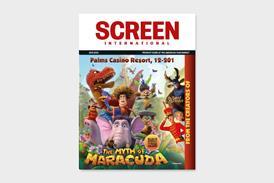
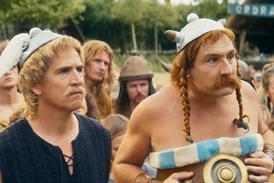
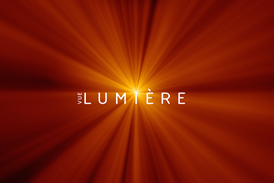

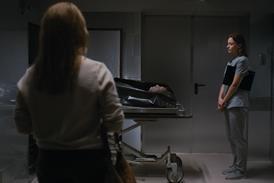
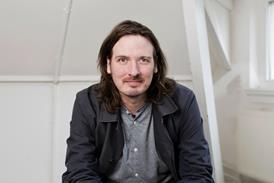

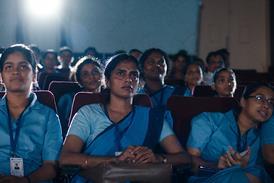
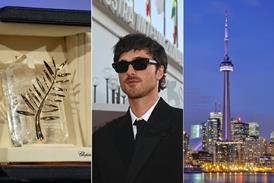
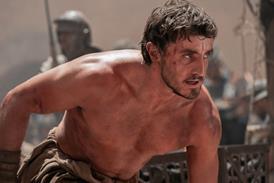












No comments yet